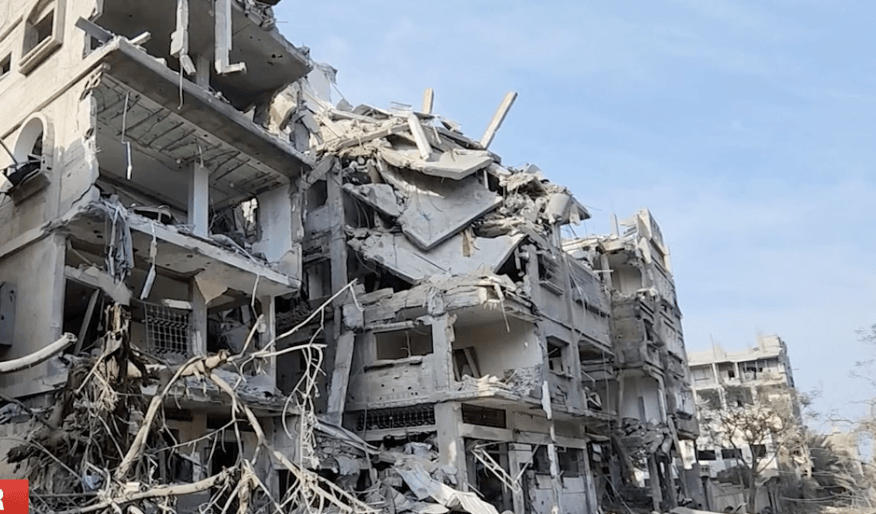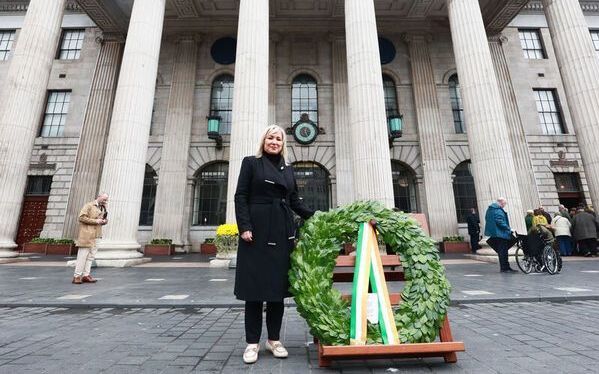IN matters political, it’s always important to ask “How did we get to this point?” It’s not always easy but it is crucial.
It’s thick-headed to condemn some violent event – the Kingsmill Massacre, Bloody Sunday – if you don’t keep in mind the civil rights movement of the 1960s, the Anglo-Irish Treaty of 1921, and back, back further to the Plantation of Ulster, when Protestant groups from southern Scotland and northern England were given the land of the native Irish in Ulster.
Just like Palestinians today, the native Irish then had to flee their homes or live as despised underlings. You’ll never understand the recent Troubles if you don’t know what happened in Ulster in the seventeenth century. You’ll never understand the attack just over a week ago by Hamas, when they forced their way into Israel and butchered or captured any Israelis they could lay their hands on if you don’t consider the history of the Palestinians and Israelis in the twHientieth and twenty-first century. So let’s have a quick five-point look.
1.In 1947, the UN voted that Palestine, under British mandate, should be divided into two states, one Jewish, one Arab. Conflict between Jews and Arabs from Egypt, Iraq and Syria followed, and ended with a Jewish state much bigger than that assigned in the UN partition plan.
2. As the Jews moved in, some 750,000 Palestinians were expelled from their homes and never allowed return. Those who stayed in the new state of Israel were deprived of most basic human rights, their land was seized and they lived in poverty.
Nowhere is safe in Gaza.
— John Finucane MP (@johnfinucane) October 20, 2023
The Israeli Government has occupied Palestinian land, blockaded Palestinian territory, & enlarged illegal settlements, all in contravention of international law.
We need international law respected & we need the international community to step up & call… pic.twitter.com/QK93omk5XA
3. Arab states like Egypt, Jordan and Syria remained hostile to the new state of Israel. In 1967, Israel launched what it called a ‘pre-emptive strike’ against its enemies. It was spectacularly successful, with the Israelis annexing further locations like Judea and Samaria, and Jewish settlements constructed on the West Bank. The Arab population of the West Bank was kept in its place by military force.
4. After two uprisings/intifadas against Israeli rule, Israel withdrew from Gaza in 2005 and parts of the West Bank. However, the Jewish state went on controlling airspace and territorial waters, and kept tight control over who entered and who left Gaza.
5. In 2006, Hamas won the Palestinian legislative elections, and over the years has fired rockets into Israel. In Gaza, the population’s poverty and living conditions deepened, as 2.3 million people scratched a living in an area smaller than County Louth.
Hostilities between the Palestinians and Israelis have continued up to the present day. In 2022 in the West Bank, Israeli armed forces killed 139 Palestinians, including over 30 children. In the same year they killed 49 Palestinians in the Gaza Strip, including 17 children, some as young as four years old. From the year 2000 to October of this year, before the Hamas incursion, 2,646 Israelis have been killed and more than 12,500 Palestinians.
These are the facts of what led to the recent attack by Hamas. Over 1,000 Israelis were killed by Hamas in that attack – these included men, women and children. While claims that babies were beheaded by Hamas have been made both in Israel and Britain, no-one as yet has provided any evidence to support these gruesome claims.
People wonder why many Irish people instinctively sympathise with Palestinians. Maybe that’s because we know as a race what it’s like to be dispossessed of our land and forced to flee with nothing. Britain saw itself as on a civilising mission when it invaded Ireland. The Israeli armed forces haven’t bothered with such excuses. In their book, the actions of Hamas must be avenged by further dispossession and death for thousands of Palestinians.
Josef Stalin is credited with the statement “A single death is a tragedy; a million deaths is a statistic." The detail of the lethal assault by Hamas has been replayed on television again and again; the thousands of Palestinian men, women and children killed by Israeli forces gets much, much less attention.
And Stalin was wrong. A million deaths is not a statistic. It is exactly equal to the tragedy of a single death, only multiplied by a million.









